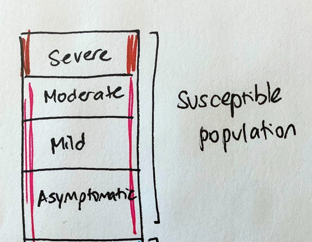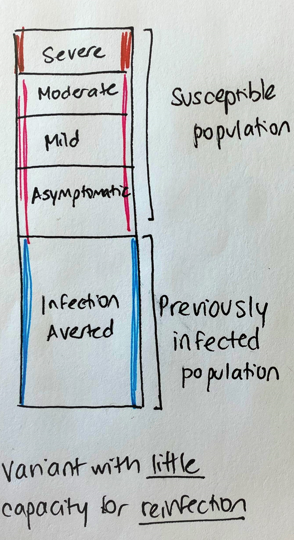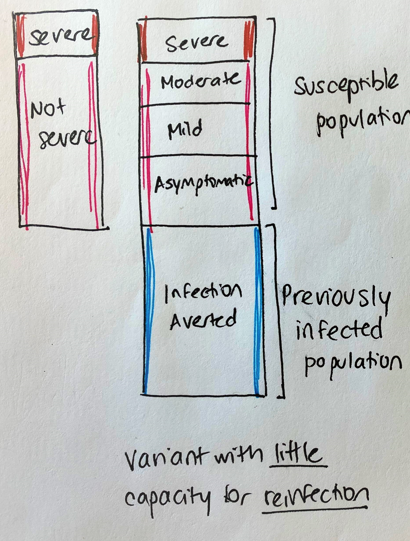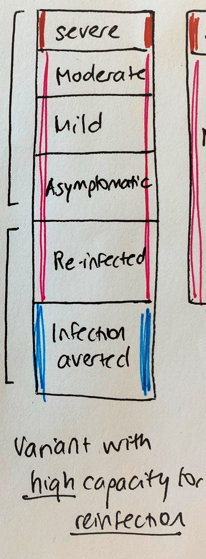A sketch to explain how a new variant may appear milder even with no change in underlying virulence. This can occur because, when calculating the fraction of cases that are severe, the denominator now includes many re-infections that had previously been averted. A thread. 1/8 

Imagine a variant with little capacity for re-infection. The susceptible population is exposed to enough virus to infect. The infections include severe, moderate, mild disease, and asymptomatic infections. (Here I point out that these sketches are not to scale.) 2/8 

But imagine our population also has a large fraction who have been previously infected. Because the variant has little capacity to re-infect, these potential infections were averted. 3/8 

When we restrict our attention to the observed cases, some fraction of these are severe. This calculation necessarily excludes any infections that were averted. 4/8 

Now imagine a variant with high capacity for re-infection. Amongst the susceptible population, the severity of the cases has not changed. Still the same fraction severe, moderate, mild, asymptomatic. But now we see re-infections, and these are generally not severe. 5/8 

So we can still calculate the fraction of cases that are severe, but this is now lower. It is not lower because there are fewer severe cases, but because there are more mild cases (re-infections). 6/8 

Thus, the severity profile of Omicron cases must be interpreted along with an understanding of its capacity to re-infect (and infect the vaccinated). I haven't talked about vaccines, but the relationships are similar. We expect a rise in milder cases in the vaccinated. 7/8
So when I look at data out of South Africa or elsewhere, I am thinking not just about the proportion of cases that are severe, but also the sheer number of severe cases, which demonstrates the public health impact of the variant. 8/END
https://twitter.com/rid1tweets/status/1468686815158808587?s=20
Addendum... excuse my color choices. I didn't have highlighters and I made do.
• • •
Missing some Tweet in this thread? You can try to
force a refresh




